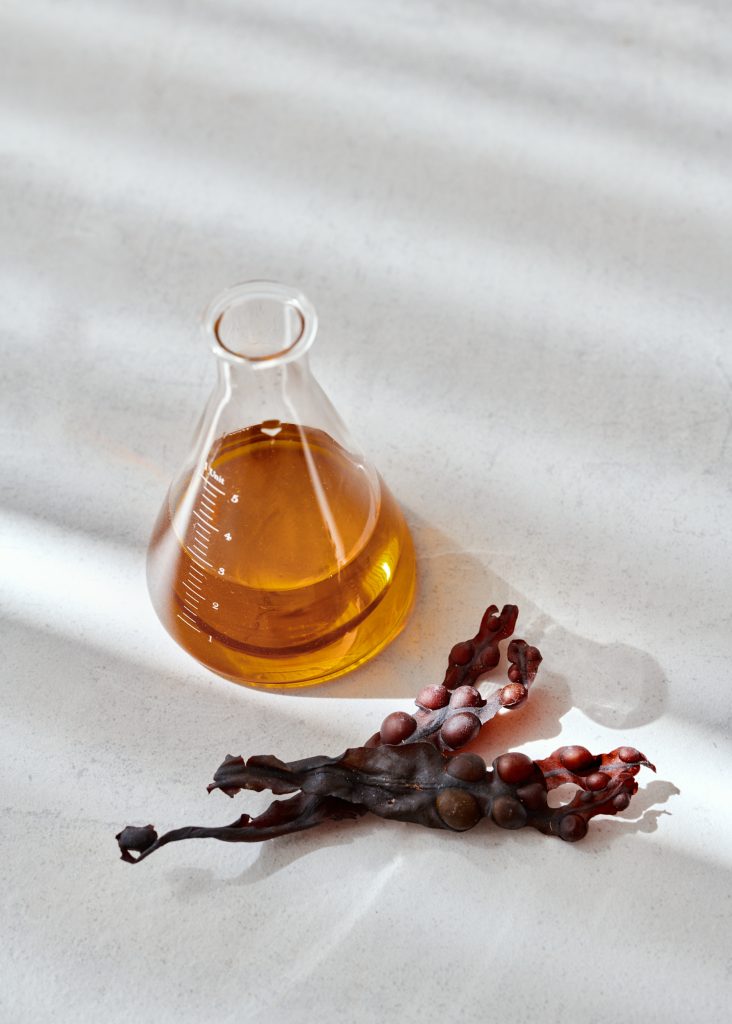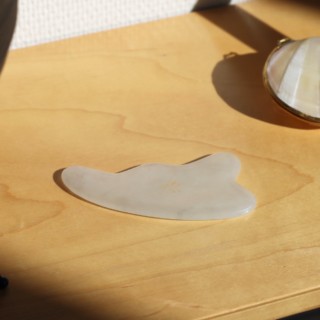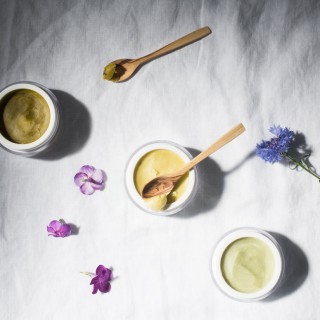I’ve seen many social media updates and ads that promote products with faulty claims and incorrect information about ingredients. These are TOP 8 myths.
I’ve been thinking about a series of posts to bust some of the most common myths relating to ingredients used in cosmetics for a long time now after seeing so many social media updates and ads that promote products with faulty claims and incorrect information about ingredients, possibly due to a lack of basic knowledge on the writer’s part. At last, I decided to seize the day and share on this topic. To prevent any incorrect chemical terms or facts, this article was checked by Jaana Ailus, chemist and R&D director at Laponie of Scandinavia.
This post is intended to rectify faulty claims in a positive way. I don’t mean to point the finger at anyone’s mistakes or ignorance or look down on others – I’ve had my own share of misunderstandings during my career. It’s good to stay curious and hungry to know more – there’s always plenty to learn. I hope this article is useful if you are interested in cosmetics or perhaps work in the field.
TOP 8 myths about ingredients in cosmetics:
1. Waterless skincare
I’ve come across ads promoting a toner or moisturizer coupled with the claim “no added water”. I’ve also seen essences, sheet masks and moisturizing lotions marketed as waterless. None of these product types can be without water; toner, essence and moisturizer always include some.
Waterless cosmetics can only consist of fat-soluble ingredients, i.e. oils, including cleansing oils, facial oils and balms, which are made up of solid oils. Also powdered products like clay powder do not include water.
The myth seems to stem from purified water (marked as Aqua on the INCI) in a product having been replaced with e.g., floral water (such as rose water), aloe vera juice or birch sap. But all these do contain water, so the product is not ‘waterless’. Floral waters originate as a by-product while distilling essential oils, meaning they are purified water with components of essential oils that have dissolved during the distillation process. Aloe vera juice is purified water mixed with freeze-dried aloe vera powder, its INCI name being Aloe Barbadensis Leaf Juice. Also birch sap naturally contains mostly water.
The myth may also stem from the erroneous thought of water being meaningless for skin. Substituting purified water with e.g., floral water does add more caring properties, but does not automatically make the product more efficient. Instead, it is the combination of ingredients and concentration and strength of active ingredients that make a difference. One product containing purified water may include a huge amount of some high-quality plant extract, while a serum with floral water could include very few active ingredients. There are also differences in the quality of plant extracts: they are often extracted into glycerine, water, alcohol or a combination of water and glycerine. It is the amount of solid in the extract and quality and extraction process that matter. Similarly, a large amount of a certain active ingredient does not automatically make it ideal. In certain ingredients, less can be more.
Finally, it is important to understand that water is vital in skincare. Our skin needs water and fats to thrive. So do make sure not to only opt for water-free products!

2. Plant-based retinol
In recent years, bakuchiol has become a trendy ingredient receiving plenty of hype for being a “plant-based retinol”. The claim is erroneous, as there is no such thing as plant-based retinol – retinol is produced synthetically. The use of retinol is banned in certified natural cosmetics, which could explain the eagerness to find a plant-based replacement. But consumers have been led astray in the process.
The myth of bakuchiol being a plant-based retinol probably stems from a couple of studies that found it to have retinol-like effects. It does not justify calling bakuchiol a plant-based retinol, though, as it is a totally different ingredient. However, it can be said to have retinol-like effects.
Why replace retinol with a plant-based alternative in the first place? A valid reason is bakuchiol being gentler for the skin, but on the other hand retinol is an eco-friendlier option. Bakuchiol is a component of the oil of the Bakuchi plant – an isolated, single component that requires cultivating the whole plant. It’s another area where there are no black and white answers. Be careful with all the marketing hype out there!
3. Rosehip oil with vitamin C
Rosehip is renowned for being packed with vitamin C, but the same cannot be said about rosehip oil with only oil-based components and vitamins dissolving into oil. Rosehip oil does contain the precursor to vitamin A, mainly beta-carotene and trans-retinoic acid.
Rosehip oil also contains lycopene and omega-3, -6 and -9 fatty acids. In other words, it includes a huge amount of ingredients beneficial for the skin. Rosehip oil is used for instance to treat scarring, aging skin, sensitivity, acne and couperose skin.
4. . Hyaluronic acid and all that hype
For years, hyaluronic acid has been a star ingredient in cosmetics due to its incredible ability to absorb water, earning its role as a humectant. It has received its fair share of hype, leading to the idea that the more hyaluronic acid a product includes the better. But is it worth all the praise?
Hyaluronic acid is the most well-known glycosaminoglycan (GAG) in the matrix, giving it its gel-like composition with plenty of viscosity. The amount decreases along with e.g., aging and stress. Hyaluronic acid in cosmetics includes such large molecules that it is unable to penetrate the epidermis, the outermost layer of the skin. In other words, it does not affect the dermis, but remains on the surface of the skin. Also low-molecule hyaluronic acid is used and claimed to absorb deeper into the skin – but not all the way to the dermis. In addition, low-molecule hyaluronic acid can have an unpleasant side effect on sensitive and dry skin: it can increase inflammation and disturb the microbial balance. If your skin is dehydrated despite splashing on the hyaluronic acid, skip it and see what happens. The same applies to other skin imbalances – if products containing hyaluronic acid do not seem to help, try giving them a miss.
Hyaluronic acid is said to work because it absorbs and binds external moisture into the skin. In reality, hyaluronic acid absorbs moisture from the nearest source, not necessarily from humidity. Especially in drier climates (where most of us live), it absorbs moisture from the skin, which in turn causes the surface of the skin to dry out. When used with water-based products and moisturizers, it absorbs moisture from the products and creates a sensation of skin being moisturized. It is important to understand that applied topically, hyaluronic acid does not increase the amount of hyaluronic acid in the skin.
Hyaluronic acid works best in moderate doses to prevent it from drying out the skin and boosting inflammation. It doesn’t make sense to use too many products that include it too keep the total amount under tabs. Personally, I’ve favoured humectants over hyaluronic acid in recent years. These days I prefer e.g., betaine, xylitol and glycerine, an undervalued classic humectant. Too much hyaluronic acid tends to make the product roll on the skin, especially when layered with other products. This doesn’t happen with the mentioned humectants.
What does actually increase the amount of hyaluronic acid in the dermis? Injectables would of course work, but there is also a natural method on offer: facial gua sha. The tension created by the slow motions and pressure fluctuations stimulate nerve endings in loose connective tissue, which in turn activates the parasympathetic nervous system and improves the production of GAG. Of ingredients in cosmetics, AHA acids invigorate the production of GAGs by stimulating skin cell renewal. AHA acids are excellent moisturizers in moderate concentrations.

5. Preservative-free cosmetics
Preservatives are often considered the baddies in skincare. It is of course good to remain critical, as many synthetic preservatives are potent and pose harmful side effects like skin sensitivity, imbalances in the microbiome of the skin that can lead to skin issues, and hormonal disorders.
A product that only contains oil-soluble substances does not need preservatives, as microbes multiply in water. Oil-based products do, however, often include antioxidants to prevent the oils from going rancid. Cleansing oils and facial oils usually contain vitamin E (INCI: Tocopherol) to serve the purpose, which also adds its extra benefits.
A product that contains water-soluble substances almost always requires preservatives to prevent harmful microbes from forming. You won’t want to apply a product onto your skin that provides direct routes into the body through areas around the mouth, eyes and nose. Products like toners, moisturizers and serums need preservatives.
Natural cosmetics mainly include mild preservatives familiar from the food industry. Mild preservatives won’t disturb the skin’s microbial balance when your skin routines include products that support it instead. It’s important to use mildly acidic products that are gentle for the skin’s hydrolipidic film. Forget about alkaline products, soaps and strongly foaming products.
Good preservatives in natural cosmetics include e.g., Dehydroacetic Acid, Sodium Dehydroacetate, Sodium Levulinate, Sodium Anisate, Benzyl Alcohol and Benzoic Acid.
I tend to avoid Potassium Sorbate and Sodium Benzoate on my face because the smell gets to me. In my experience they can sometimes also cause irritation to people with sensitive skin. Studies have shown that their use in food products weakens the gut microbiome, so they are perhaps not the ideal choice in skincare products either, despite the excellent preserving qualities. But there’s no need to become fanatical, and some of the hair, body and other occasional products I use may contain these. Here, too, it is the quantity that matters: a low concentration in an individual product will hardly do any harm.
When checking my text, Jaana mentioned that preservatives in cosmetics will also be discussed on Laponie’s IG account. She is currently testing two emulsions in her lab, one with preservatives and the other without. The results will be revealed on Laponie’s IG in a few weeks, so make sure to hit the follow button.
6. Alkaline skincare
Luckily alkaline skincare is not really a thing these days, but I wanted to mention it anyway. It means applying an alkaline product with a pH of 8.5 that mainly contains baking soda (INCI: Sodium Bicarbonate). It is thought to invigorate the production of the skin’s own acids, which removes metabolic waste from the skin. There is a logic to it in the sense that the skin is a wise organ that constantly strives to find a balance and adapt to prevailing conditions. Healthy skin is acidic with a pH level of 3.5-5.5. If you upset the balance, it will do everything it can to correct the situation. Whether alkalinity is the gentlest method in the long run is a different matter.
A balanced pH ensures a good habitat for the microbiome. It is a well-known fact that a diverse microbiome plays an important role in the skin’s immune system. If the pH rises above 7 and becomes alkaline, the skin’s enzyme activity, sebum secretion and production of the natural moisturizing factor deteriorate and the habitat of beneficial microbes shrinks, allowing harmful microbes to take over. Skin can become dry, rough and flaky and be prone to inflammation and rashes. Propionibacterium acnes that causes acne and Staphylococcus aureus that causes atopic skin have been found to thrive in an alkaline environment.
To summarize, opt for mildly acidic skincare products and take care of the balance of the skin’s microbiome and protective hydrolipidic layer. If you want to go to the extremes, do it only on occasion to avoid unwanted side effects and destroying the skin’s natural defence mechanism. Also note that bars of soaps are extremely alkaline, so never use them to wash your face.
7. AHA acids thin out the skin
AHA or fruit acids are sometimes claimed to thin out the skin, which is not true. AHA stands for alpha hydroxy acids, which include: glycolic acid, lactic acid, mandelic acid, malic acid, citric acid and tartaric acid. Glycolic acid and lactic acid are the most common in cosmetics, usually in exfoliants and essences. AHA acids stimulate the regeneration of skin cells and moisturize, turning it visibly brighter, smoother and firmer. It can leave a burning or tingling sensation and redness before the skin is accustomed to it, although this depends on concentrations and the product’s pH level. Avoid going to the extreme also when it comes to AHA acids.
Claims that AHA acids would make skin thinner are simply not true. Along with aging, the keratinization process slows down, which thickens the stratum corneum. Also younger skin may experience disruptions with a similar effect. AHA acids normalize the skin’s keratinization process, which thins out a thickened stratum corneum. This is actually a good thing, as it means that the skin’s functions become normalized, and the surface of the skin is more supple and resilient. The dermis, the lower layer of the skin, does get thinner as we age, causing looser skin and loss of volume. According to research, AHA acids thicken the dermis, strengthen collagen and elastin fibres and increase the amount of glycosaminoglycans in the matrix. This improves the moisture balance of the dermis, making skin fuller and smoother.
When it comes to AHA acids, it’s the concentration that matters. A moderate concentration of 3-10 % is the recommended amount. The more sensitive your skin is, the lower the concentration should be, allowing skin to adjust gradually. A concentration of 3 % has mainly a moisturizing effect, while higher concentrations will also exfoliate. Used regularly, you may notice the skin needing less moisturization and products overall. Remember that especially in the case of skin imbalances, sensitivities and inflammation, avoid applying strongly activating ingredients including AHA acids.
Of AHA acids, small-molecule glycolic acid is absorbed deeper into the skin, meaning it can also cause more sensitivity. Larger-molecule PHA (polyhydroxy) acid gluconolactone is a good alternative that may also work for sensitive skin.
Finally, a word or two about AHA acids and sunlight: products containing AHA acids can be used in the summertime and in sunlight as long as you remember to apply sunscreen. Do consider whether it’s the best idea to barbeque your skin under the sun while using products with a high concentration of acids, though – moderation is key in both cases.
8. Oil-free emulsion
I’ve come across marketing claims advertising oil-free emulsions with oil glaring at the top of the INCI list – what is going on there?
Even if a product is described as “non-oily”, it does not mean oil-free. It simply indicates that the product does not leave an oily sensation on the skin.
I’ve come across an emulsion on an online store that was described as ”oil-free” despite containing Coco-Caprylate/Caprate or Caprylic/Capric Triglyceride. These are so-called ester oils, i.e., fractionated plant oils – in other words, oils. They feel thinner on the skin than most whole plant oils, but this does not make them “oil-free”.

Photos: Riikka Kantinkoski
Translation: Rebecca Watson
Sources:














